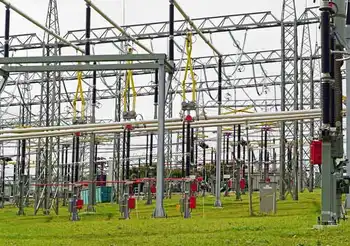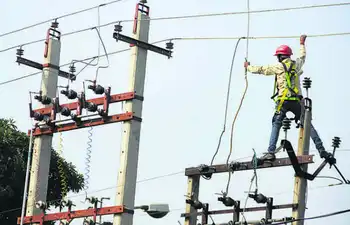Albany Companies Create New Ways to Deliver Power
Albany, N.Y., -- - The New Energy New York consortium has won a $50,000 start-up grant from the federal government in 2003. Just $99,950,000 to go. That's how much -- $100 million -- the group of Capital Region alternative-energy companies needs over the next five years to develop a range of solutions to the nation's power needs, said Pradeep Haldar, director of energy and environmental technologies at the University at Albany's Albany NanoTech initiative.
Haldar was joined recently at UAlbany by U.S. Sen. Charles Schumer, D-N.Y., and several corporate and elected officials as they marked the consortium's first anniversary.
The goal of the project, Schumer said, is to "show the nation we are the world leader" in alternative-energy technology, with the goal of getting more companies to do work here. And following a summer in which a blackout cut off electricity to 50 million people, there's more reason than ever for the initiative, he said.
The companies -- which include Latham fuel-cell maker Plug Power Inc., General Electric Co.'s Global Research unit in Niskayuna and SuperPower Inc., a Schenectady developer of superconducting power cables -- said they are backing a proving ground in which their technologies will be connected together as part of a model electric grid.
A SuperPower transmission cable, for example, may carry energy generated by a Plug fuel cell to some kind of energy storage system.
That's a more grandiose vision than the concept Haldar spoke of last year. Then, the testing area he proposed would have simply been a place for manufacturers to test their technologies individually, rather than link them together.
Since Dec. 12 last year, when Schumer came to campus to kick off the initiative, the nine-member group has met several times, put together a Web site (http://www.neny.org) and reached agreement on how to handle intellectual property issues that arise as a result of their joint research -- which has yet to begin.
They should be ready to move in tandem in 2004, Haldar said.
Recently, Schumer returned to campus with a pair of officials from federal energy agencies, to whom he showed off local energy prowess.
Albert H. Benson, a project manager in the Boston regional office of the U.S. Department of Energy, said he already is familiar with work being done in the Capital Region and he visits often. But putting together a group of companies to do joint research is "a novel approach," he said.
"Hopefully, we can identify things where their objectives and the Department of Energy's objectives meet," Benson said.
Other money will be spent on research projects and other work to help promote the Capital Region as a good place for an energy business to land.
"I truly believe that our next decade will be so much better than the last two or three in terms of job growth," Schumer said.
Related News

Florida Power & Light Faces Controversy Over Hurricane Rate Surcharge
MIAMI - In the aftermath of recent hurricanes, Florida Power & Light (FPL) is under scrutiny as it implements a rate surcharge to help cover the costs of restoration and recovery efforts. The surcharges, attributed to Hurricanes Debby and Helene, have stirred significant debate among consumers and state regulators, highlighting the ongoing challenges of hurricane preparedness and response in the Sunshine State.
Hurricanes are a regular threat in Florida, and FPL, as the state's largest utility provider, plays a critical role in restoring power and services after such events. However, the financial implications of these natural disasters often leave residents…




